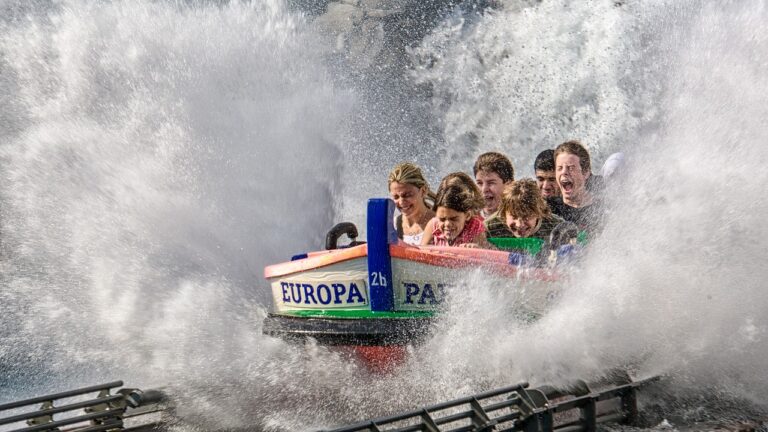How to Create Realistic Space Effects
11xplay reddy login registration, laser book 247, skylive casino:Creating realistic space effects in your digital art can add a whole new level of depth and intrigue to your work. Whether you are designing a sci-fi movie poster or just want to add a cosmic touch to your illustrations, mastering space effects can take your designs to the next level. In this article, we will cover everything you need to know to create stunning space effects that look lifelike and captivating.
Understanding the Basics of Space Art
Before we dive into the techniques and tools to create realistic space effects, let’s take a moment to understand the basics of space art. Space is vast, mysterious, and full of awe-inspiring objects like galaxies, nebulae, and stars. To create realistic space effects, you need to have a good grasp of how these objects interact with each other and how they appear in different lighting conditions.
Here are a few key principles to keep in mind when creating space effects:
1. Depth and Perspective: Space is three-dimensional, so it’s crucial to convey depth and perspective in your designs. Objects that are closer to the viewer should appear larger and more detailed, while objects farther away should be smaller and less distinct.
2. Color and Light: Space is not just black and white it’s full of vibrant colors and dynamic lighting effects. Experiment with different color palettes and lighting sources to create a realistic and visually appealing space scene.
3. Texture and Detail: To make your space effects look realistic, pay attention to texture and detail. Add subtle textures to celestial bodies like planets and stars to give them depth and dimension.
Now that we have covered the basics, let’s dive into the techniques and tools you can use to create realistic space effects in your digital art.
Creating Realistic Space Effects: Step-by-Step Guide
1. Start with a Blank Canvas: Begin by creating a new document in your favorite digital art software. Choose a dark background to represent the vastness of space.
2. Add Stars: Use a soft brush tool to create a scattering of stars across the canvas. Vary the size and opacity of the stars to create a more realistic effect.
3. Create a Nebula: Nebulae are clouds of gas and dust in space that can add a sense of mystery and beauty to your designs. Use a cloud brush or create your own nebula using gradient fills and blending modes.
4. Add Planets and Moons: Planets and moons are essential elements of a space scene. Use circular shapes to create planets and smaller circles for moons. Experiment with different textures and colors to make them look realistic.
5. Include Galaxies: Galaxies are massive collections of stars, gas, and dust that can add a sense of scale and wonder to your space effects. Use a spiral brush or create your own galaxy using gradient fills and blending modes.
6. Play with Lighting Effects: Add light sources like stars and distant galaxies to create a sense of depth and dimension in your space scene. Experiment with different blend modes and opacities to achieve the desired effect.
7. Experiment with Color Gradients: Use color gradients to add depth and realism to your space effects. Start with a dark background and gradually add lighter colors to create a sense of distance and atmosphere.
8. Fine-Tune Your Composition: Once you have all the elements in place, take a step back and evaluate your composition. Make adjustments to the placement and size of objects to create a balanced and visually pleasing space scene.
9. Add Details and Textures: To make your space effects truly realistic, add small details and textures to your design. Add craters to your planets, dust clouds to your nebulas, and sparkles to your stars to make them more lifelike.
10. Final Touches: Before finalizing your design, make any last-minute adjustments to lighting, colors, and composition. Take a moment to step back and look at your work with fresh eyes to ensure that everything looks cohesive and polished.
Now that you have a step-by-step guide on how to create realistic space effects, it’s time to practice and experiment with different techniques to improve your skills. Remember, creating realistic space effects takes time and patience, so don’t be afraid to keep refining your designs until you achieve the desired result.
FAQs
Q: What software can I use to create realistic space effects?
A: There are several digital art software options available that you can use to create realistic space effects, including Adobe Photoshop, Procreate, and Clip Studio Paint.
Q: Do I need to have a background in digital art to create space effects?
A: While having a background in digital art can be helpful, anyone can learn to create realistic space effects with practice and experimentation. Don’t be afraid to try new techniques and push yourself out of your comfort zone.
Q: Can I use space effects in commercial projects?
A: Yes, you can use space effects in commercial projects as long as you have the necessary rights to the assets you are using. Be sure to check the licensing agreements of any images or brushes you use in your designs.
In conclusion, creating realistic space effects is a rewarding and challenging endeavor that can elevate your digital art to new heights. By understanding the basics of space art, experimenting with different techniques, and practicing regularly, you can create stunning and lifelike space effects that will captivate your audience. So, grab your digital art software and start exploring the depths of space in your designs today!







